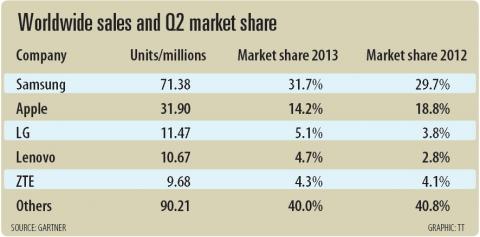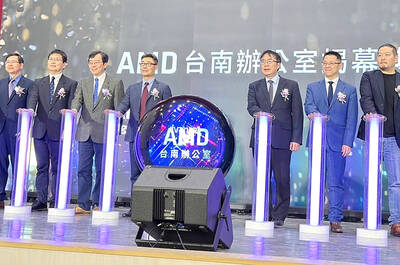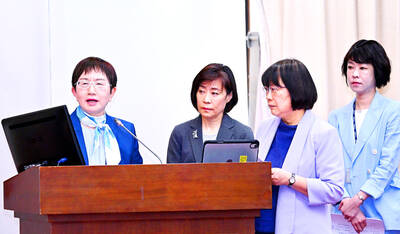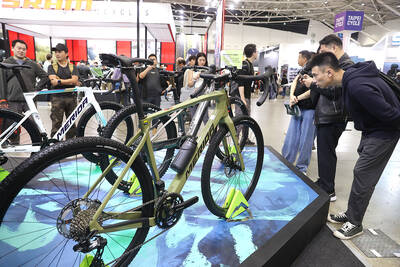Worldwide smartphone sales outpaced those for feature phones in the second quarter of the year, with Samsung retaining its leading position in the market, market researcher Gartner Inc said yesterday.
“Smartphones accounted for 51.8 percent of mobile phone sales in the second quarter of 2013, resulting in smartphone sales surpassing feature phone sales for the first time,” Anshul Gupta, a principal research analyst at Gartner, said in a statement.
Gartner’s latest report, which based its measurement on sales of mobile handsets to end users instead of shipments by handset makers, showed global smartphone sales totaled 225 million units in the three months through June, while worldwide feature phone sales reached 210 million units in the quarter.

As smartphone sales grew in all regions last quarter, total sales increased 46.5 percent from the second quarter last year, while global feature phone sales contracted 21 percent last quarter from a year earlier, dragging down the total mobile phone sales to grow just 3.6 percent year-on-year to 435 million units in the quarter, Gartner said.
For the whole of this year, the researcher maintained its June forecast for worldwide mobile phone sales to increase 4.3 percent, from 1.75 billion units last year to 1.82 billion units.
“With second quarter of 2013 sales broadly on track, we see little need to adjust our expectations,” Gupta said. “Flagship devices brought to market in time for the holidays, and the continued price reduction of smartphones will drive consumer adoption in the second half of the year.”
Next year, global mobile phone sales are expected to reach 1.9 billion units, up 4.39 percent from this year, Gartner forecast on June 24.
The latest report showed that Samsung Electronics Co, maker of the Galaxy-series Android phones, led the global market in the April-to-June period with a share of 31.7 percent, outperforming iPhone maker Apple Inc’s 14.2 percent.
The South Korean company was also the champion in the overall mobile phone market last quarter with 107.53 million units, ahead of the Lumia phone maker Nokia Oyj, which sold 60.95 million units around the world, the report showed.
However, Samsung would need to step up its presence in the mid-end phone segment and become more aggressive in emerging markets to maintain its leadership, the market researcher said.
“Innovation cannot be limited to the high end,” Gupta said.
Meanwhile, China’s Lenovo Group Ltd (聯想) jumped to the No. 4 position in the worldwide smartphone market for the first time last quarter, after sales grew 144 percent year-on-year on booming demand in its home market. That Chinese demand represents more than 95 percent of its overall sales, but also a challenge for Lenovo to reach out elsewhere in the world, Gartner said.
In terms of smartphone operating systems, the report showed that Google Inc’s Android operating system grabbed a bigger market share of 79 percent last quarter, compared with the 64.2 percent a year ago, while Apple’s iOS saw its market share decline to 14.2 percent from 18.8 percent over the same period.
Gartner said Microsoft Corp’s Windows Phone operating system outranked BlackBerry for the first time in the second quarter as the third-largest with 3.3 percent market share. Gupta said Microsoft should continue to focus on growing interest from app developers to help grow its appeal among users.

TECH CLUSTER: The US company’s new office is in the Shalun Smart Green Energy Science City, a new AI industry base and cybersecurity hub in southern Taiwan US chip designer Advanced Micro Devices Inc (AMD) yesterday launched an office in Tainan’s Gueiren District (歸仁), marking a significant milestone in the development of southern Taiwan’s artificial intelligence (AI) industry, the Tainan City Government said in a statement. AMD Taiwan general manager Vincent Chern (陳民皓) presided over the opening ceremony for the company’s new office at the Shalun Smart Green Energy Science City (沙崙智慧綠能科學城), a new AI industry base and cybersecurity hub in southern Taiwan. Facilities in the new office include an information processing center, and a research and development (R&D) center, the Tainan Economic Development Bureau said. The Ministry

ADVERSARIES: The new list includes 11 entities in China and one in Taiwan, which is a local branch of Chinese cloud computing firm Inspur Group The US added dozens of entities to a trade blacklist on Tuesday, the US Department of Commerce said, in part to disrupt Beijing’s artificial intelligence (AI) and advanced computing capabilities. The action affects 80 entities from countries including China, the United Arab Emirates and Iran, with the commerce department citing their “activities contrary to US national security and foreign policy.” Those added to the “entity list” are restricted from obtaining US items and technologies without government authorization. “We will not allow adversaries to exploit American technology to bolster their own militaries and threaten American lives,” US Secretary of Commerce Howard Lutnick said. The entities

Minister of Finance Chuang Tsui-yun (莊翠雲) yesterday told lawmakers that she “would not speculate,” but a “response plan” has been prepared in case Taiwan is targeted by US President Donald Trump’s reciprocal tariffs, which are to be announced on Wednesday next week. The Trump administration, including US Secretary of the Treasury Scott Bessent, has said that much of the proposed reciprocal tariffs would focus on the 15 countries that have the highest trade surpluses with the US. Bessent has referred to those countries as the “dirty 15,” but has not named them. Last year, Taiwan’s US$73.9 billion trade surplus with the US

The Taipei International Cycle Show (Taipei Cycle) yesterday opened at the Taipei Nangang Exhibition Center, with the event’s organizer expecting a steady recovery in the industry this year following a tough last year. This year, 980 companies from 35 countries are participating in the annual bicycle trade show, showcasing technological breakthroughs and market development trends of the bicycle industry at 3,600 booths, the Taiwan External Trade Development Council (TAITRA, 外貿協會) said in a statement. Under the theme “Ride the Revolution,” the exhibition has attracted more than 3,500 international buyers from 80 countries to preregister for the four-day event, which is expected to